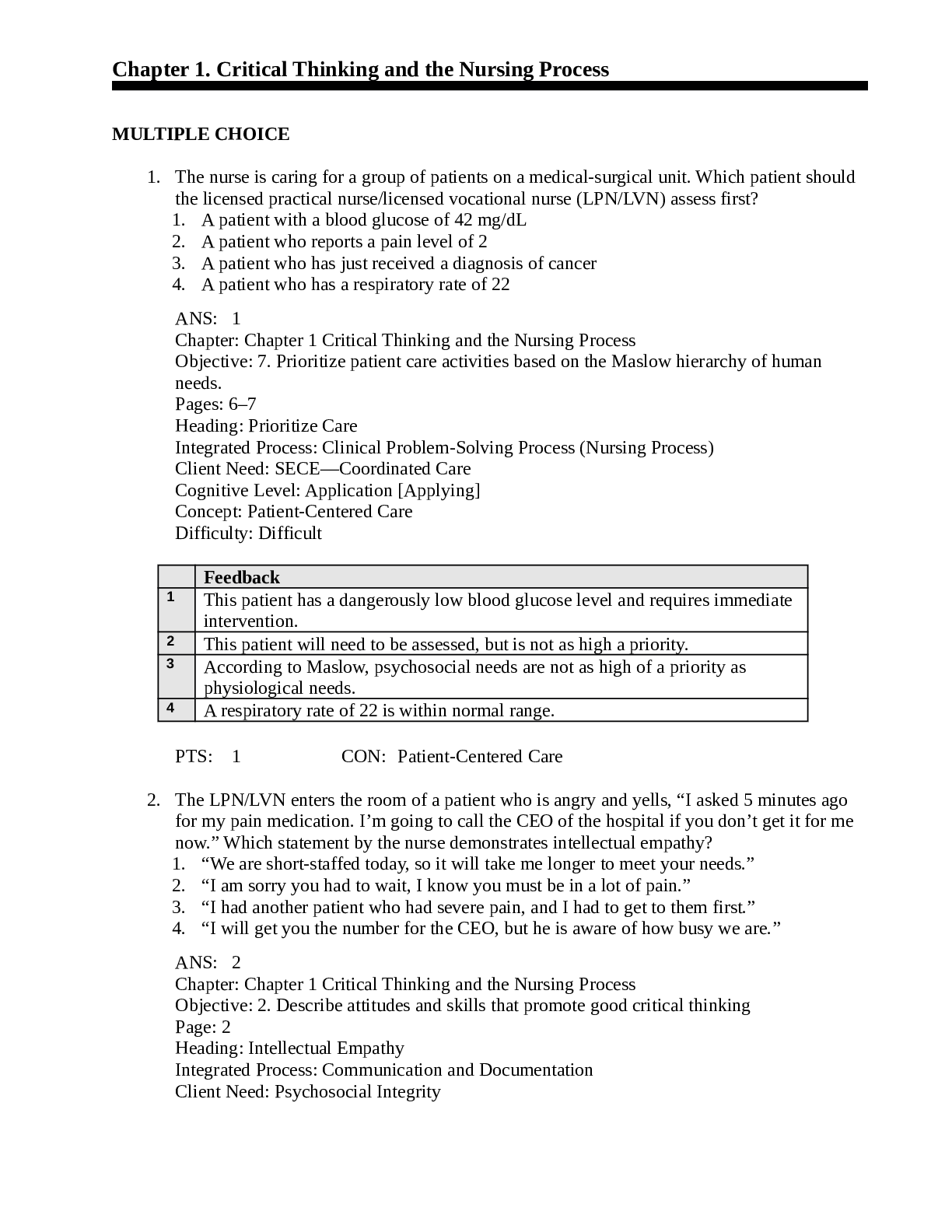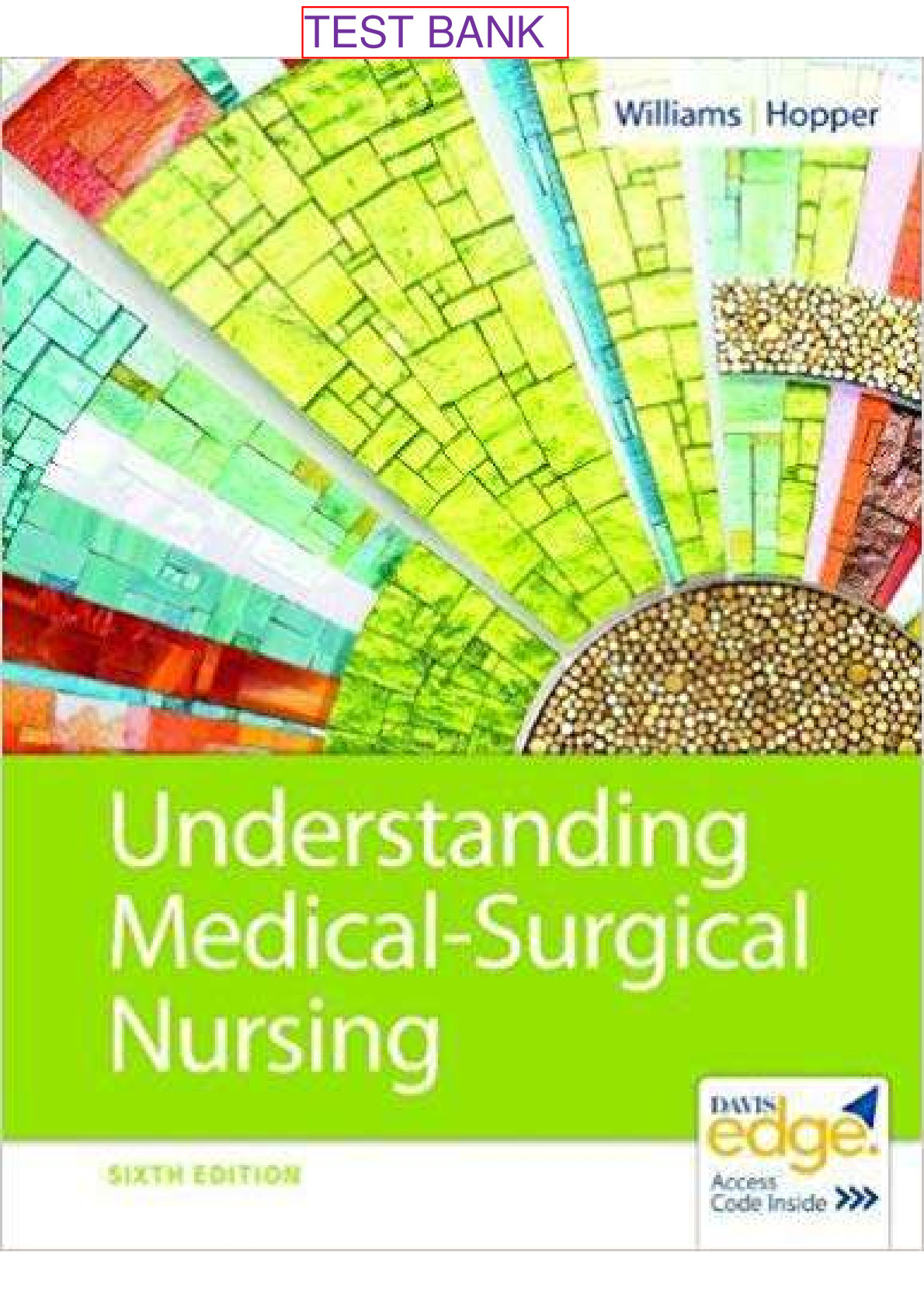CHAPTER 12 UNDERSTANDING MEDICAL SURGICAL NURSING questions well solved
Document Content and Description Below
Surgery Is the use of the instruments during an operation It treats injuries, diseases, and deformities. The involved body organ, part, or location and the suffix that describes what is done ... during the procedure. Surgery procedures are named according to Surgeon; Advanced practice nurses Surgery is performed by ___________ and other physicians trained to do certain surgical procedures. ______________ with training may also perform minor surgical procedures. Urgency required for a successful outcome for the patient Surgery is scheduled based on the minimally invasive surgery Is less damaging to tissue than traditional open incision surgery Endoscope Used for minimally invasive surgery keyhole surgery Known as minimally invasive surgery Laparoscopic surgery (abdominal and pelvic cavity) and thoracoscopic surgery ( chest and thoracic cavity) Minimally invasive surgery includes ____________ and _________. Emergency surgery Immediate surgery needed to save life or limb without delay ruptured aortic aneurysm or appendix, traumatic limb amputation, loss of extremity pulse from emboli Examples of emergency surgery Urgent surgery Surgery needed within 24-30 hours Fractured repair, infected gallbladder Examples of urgent surgery Elected surgery Planned/scheduled surgery, with no time requirements Joint replacement, hernia repair, skin lesion removal, tummy tuck Examples of elective surgery Optional Surgery surgery requested by the patient Cosmetic surgery, nose job, face lift Examples of elective surgery Endoscopic Has has a light, camera, and suction attached suctioned attached to it.. De Vinci surgical system Type a of surgical reboot preoperative, intraoperative, postoperative The three stages in the surgical process perioperative refers to the three phases of surgery: preoperative, intraoperative, and postoperative. it also has a fined time time and includes the time before, during and after surgery. 1. Assist in data collection and contribute to the pt's plan of care 2. Reinforce teaching and instructions given to the pt and family by the surgeon and RN 3. Provide emotional and psychological support for pts LPN primary role in the preoperative phase of surgery preoperational phase Begins with the decisions for surgery and ends with the transfer to the operating room introperspective phase Begins with the transfer to operating room and ends with admission to perianesthesia care unit (PACU) postoperative phase Beings with admission to PACU and continues until recovery is complete Identify and implement actions that reduce surgical risk factors When preparing a pt for surgery , the goal is to Help the pt to achieve the best possible surgical outcome Goal of preoperative phase : Which is done by insuring pt is as healthy as possible Quality of life For older pts, surgery can promote (Age does not mean you are at greater surgical risk, but chronic disease my increase the risk) Higher levels of protein (for tissue repair and healing), vitamin C (for collagen formation), and zinc (for growth, skin integrity, and cell-mediated immunity). Nutrients required for surgery include Dehiscence Opening of a wound Pt's age, medical history, and assessment findings, and agency protocols. In women a urine or serum pregnancy test may be done to prevent fetal exposure to anesthetics. Preoperative diagnostic testing is based on advanced directive (living will or health care durable power of attorney) Federal law requires pt's to be asked if that have a signed ___________ for their medical record. - date and time of admission - admission (arrive two hours before surgery to admission) - length of stay and items to bring and wear - recovery after surgery - family communication - discharge criteria Preoperative teaching for common surgical routines include Meds can be taken with one ounce of water and food and liquids are restricted before surgery to do reduce the risk of pulmonary aspiration during surgery Explained meds, food, and liquids before surgery atelectasis The collapse of alveoli in one or more areas of the lung from hypoventilation or mucous obstruction. Fatal hereditary muscular disease, and can be triggered by some types of general anesthetic agents and/or succinylcholine . A history of anesthetic problems and a muscle biopsy diagnose this problem What is malignant hyperthermia Metabolism in the muscles is increased, which produces a very high fever and muscle rigidity, along with tachycardia, tachypnea, hypertension, arrhythmias, hyperkalemia, metabolic and respiratory acidosis, and cyanosis. 100% of oxygen is given, surgery is stopped, prevention of death is required, atrium relives muscle spasm. S/S of malignant hyperthermia Incentive spirometry Can be ordered to prevent atelectasis Herbal supplement or recreational drugs, anticoagulants such as warfarin (coagulants) or nonsteriodal anti-flammitory drugs (NSAIDS) including aspirin. Medications that may or need to be stopped several days before surgery How much do you smoke/drink. When asking about tobacco and alcohol use ask Do you use recreation or street drugs When asking about drug use ask Pt's or authorized person's signature on the consent form (which indicates that you have observed the informed pt to voluntary sign the consent form, not about the surgical procedure that is for the surgeon) A court order can be obtained in a medical emergency It may be the LPNs role to obtain and witness the 68 to 77 degrees Fahrenheit; 20-25 degrees Celsius This protects the stave from blood borne pathogens. Traffic is also limited in and out of the OR and strong disinfectants are use to clean the OR after each case temperature range for OR Assist with maintaining the sterile surgical field LPN/LPV may general anesthesia Causes the pt tp lose sensation, consciousness and reflexes. It acts directly on the central nervous system. local anesthesia Blocks the nerve impulse along with the nerve when it is injected resulting in the loss in sensation to a region of the body but not loss of consciousness general anesthesia Given by IV or inhalation Induction The period from when the anesthesia is first given until full anesthesia is reached [Show More]
Last updated: 1 year ago
Preview 1 out of 7 pages
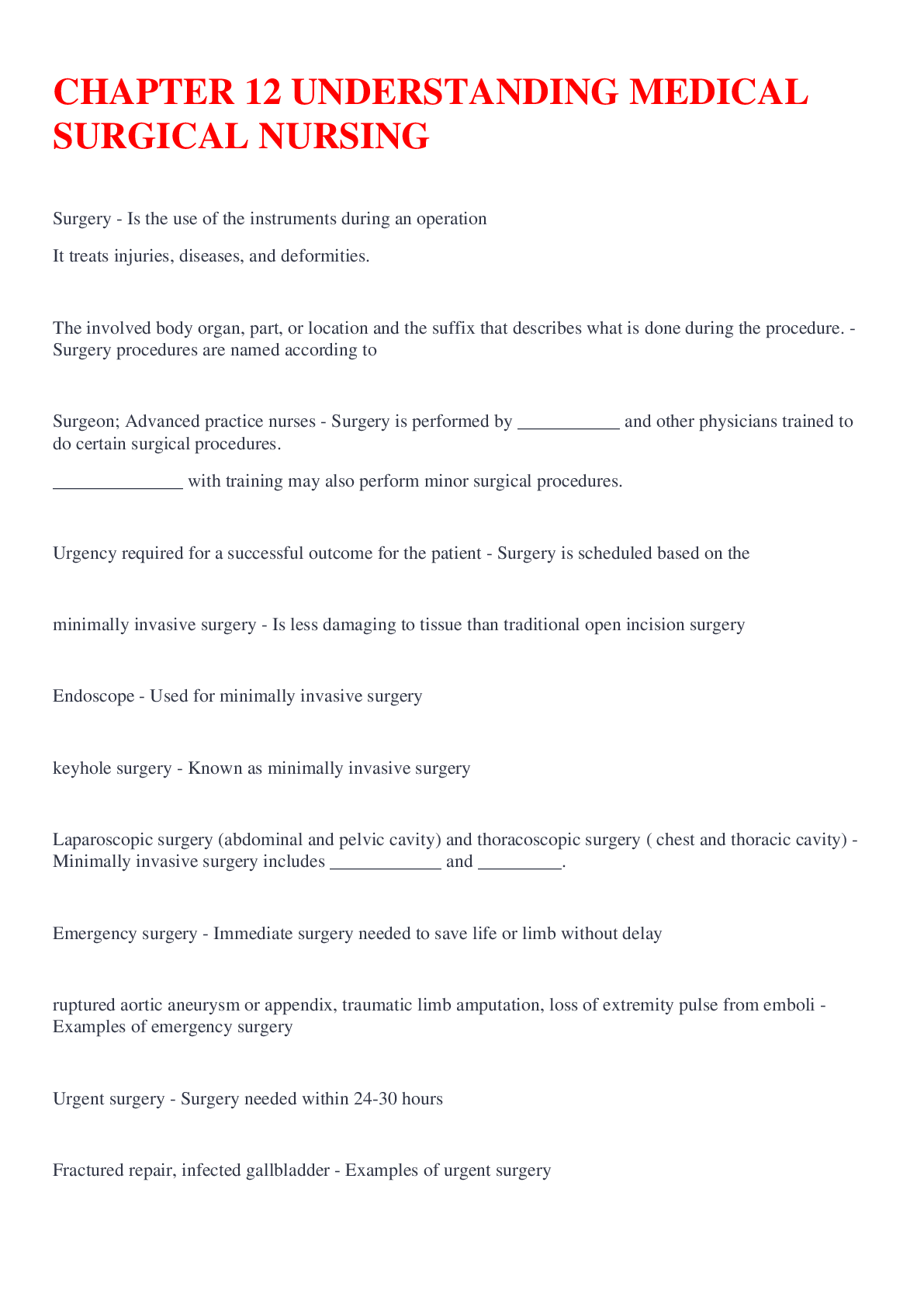
Reviews( 0 )
Document information
Connected school, study & course
About the document
Uploaded On
Oct 30, 2022
Number of pages
7
Written in
Additional information
This document has been written for:
Uploaded
Oct 30, 2022
Downloads
0
Views
46

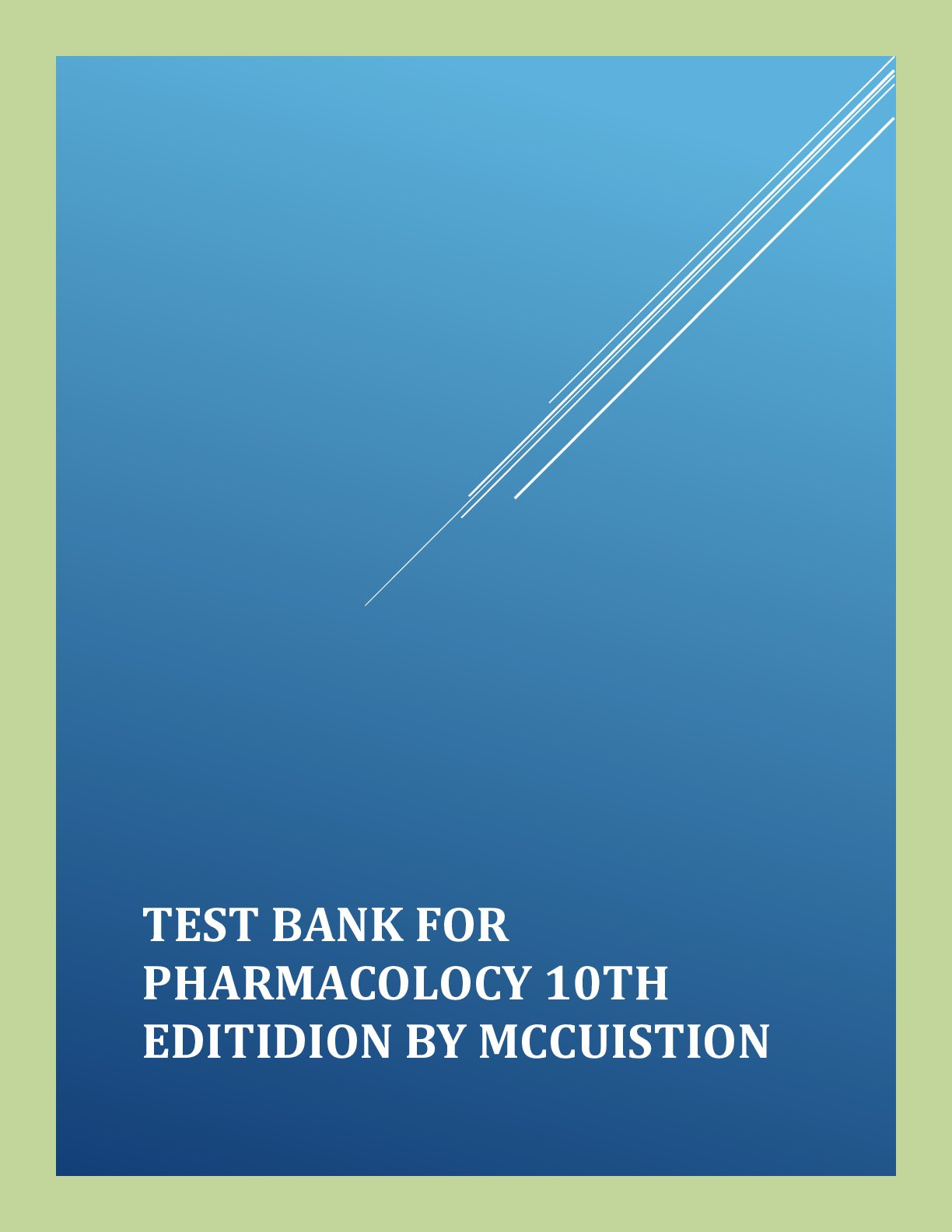

 (1).png)
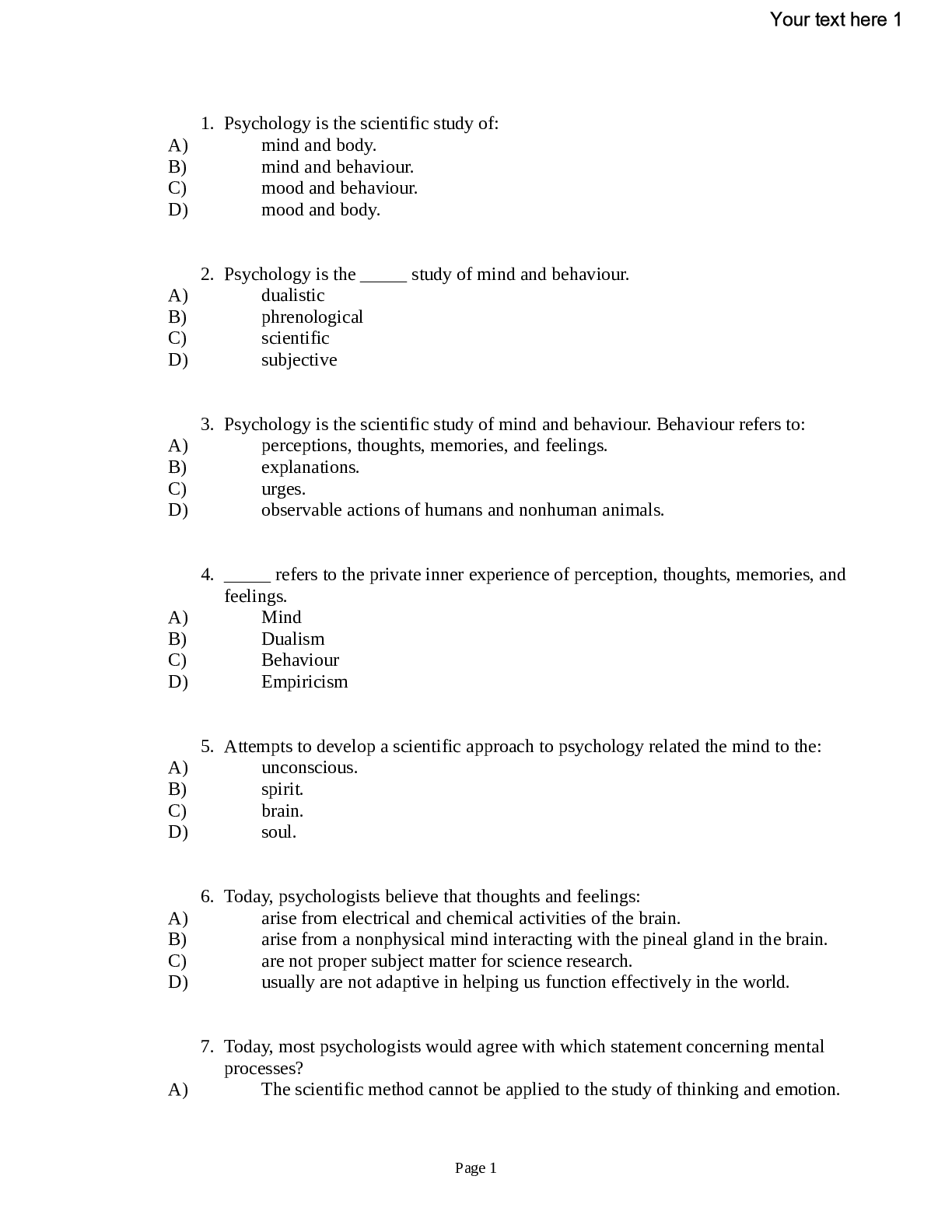
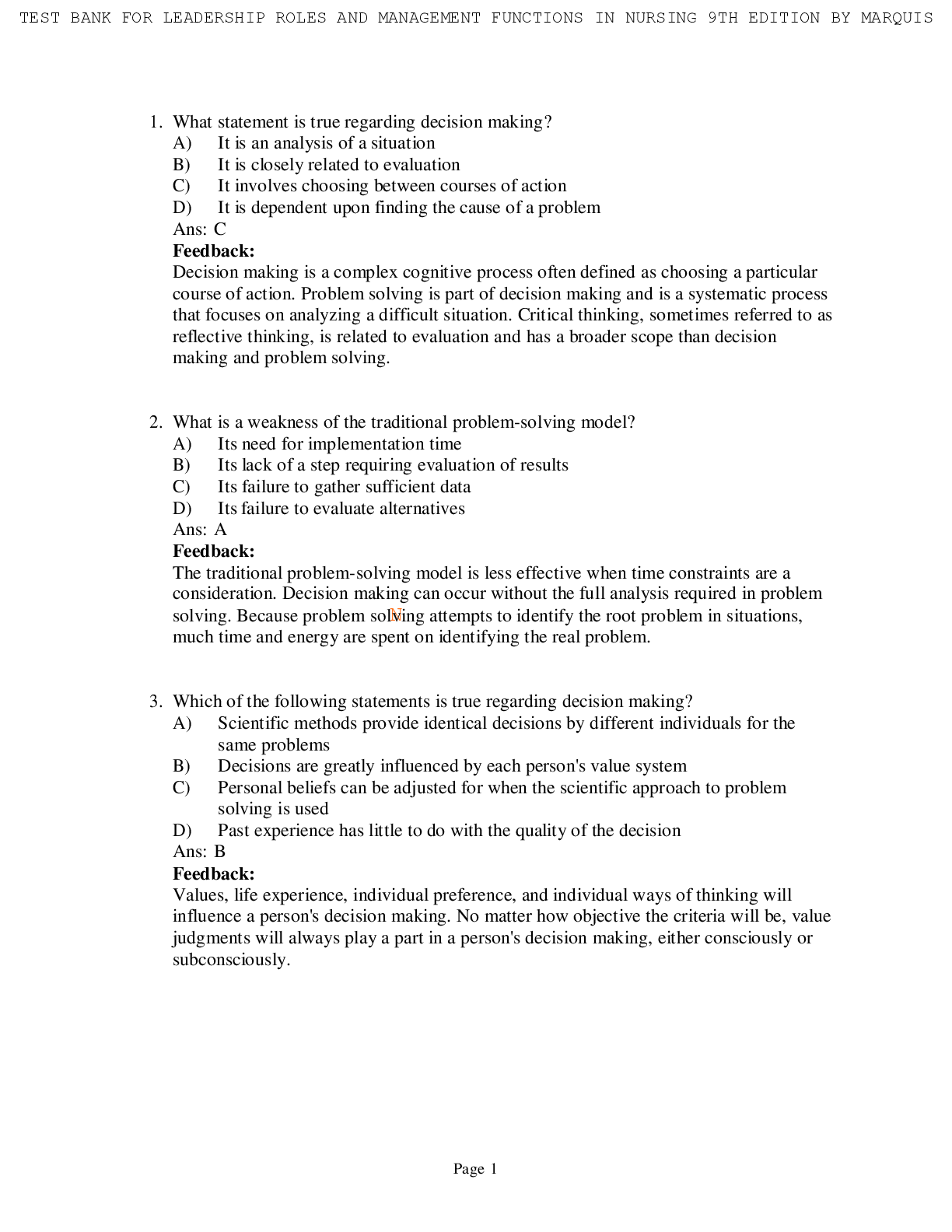
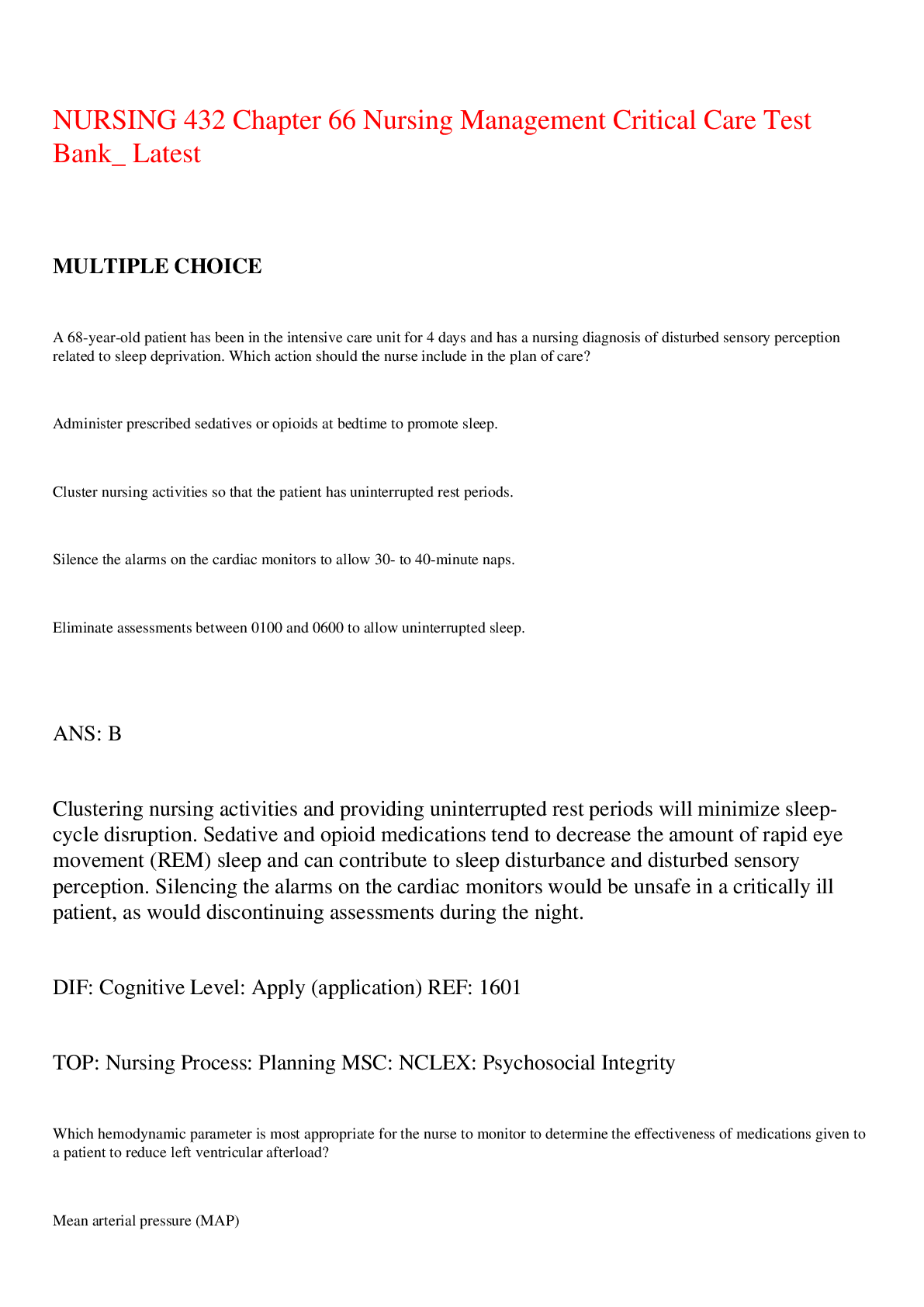
 (1).png)

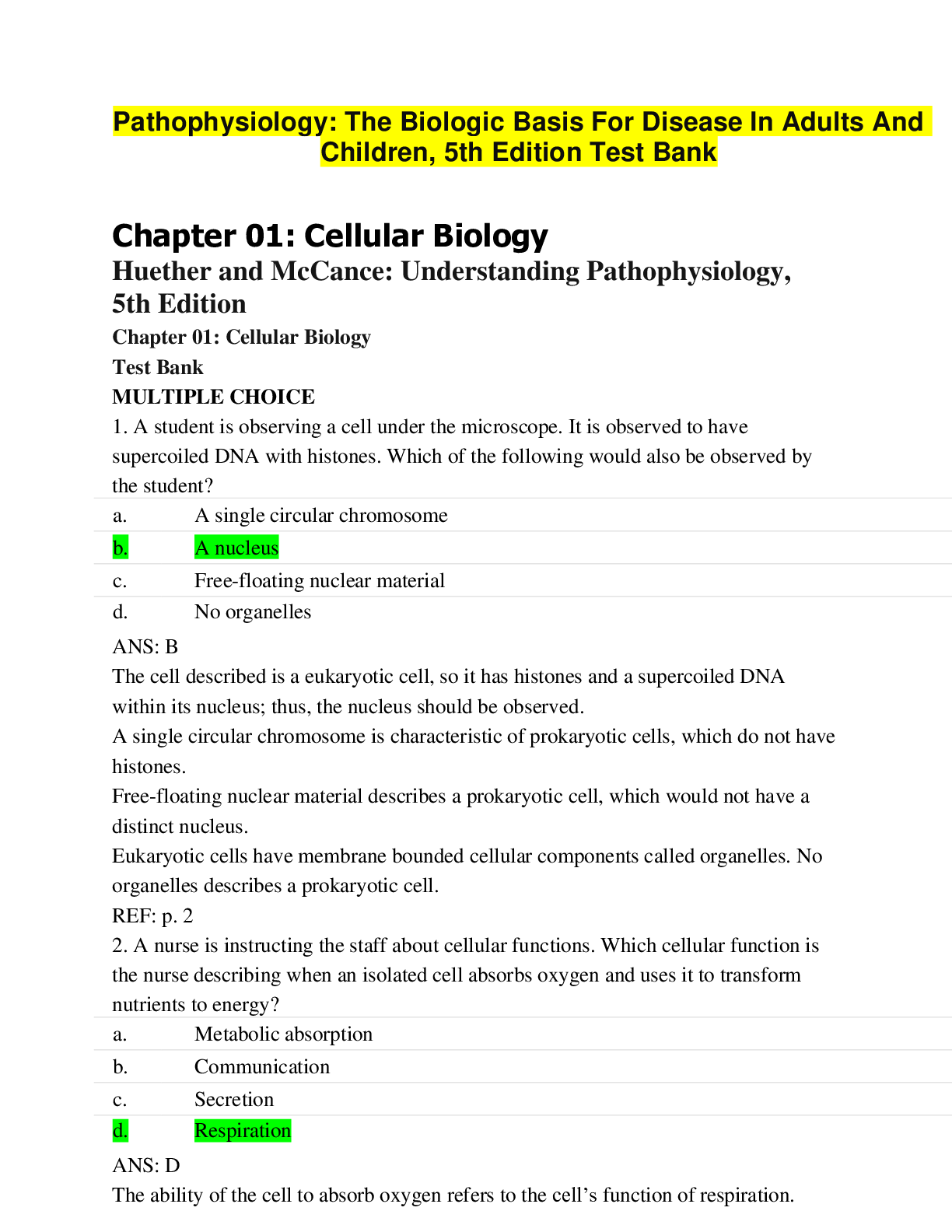
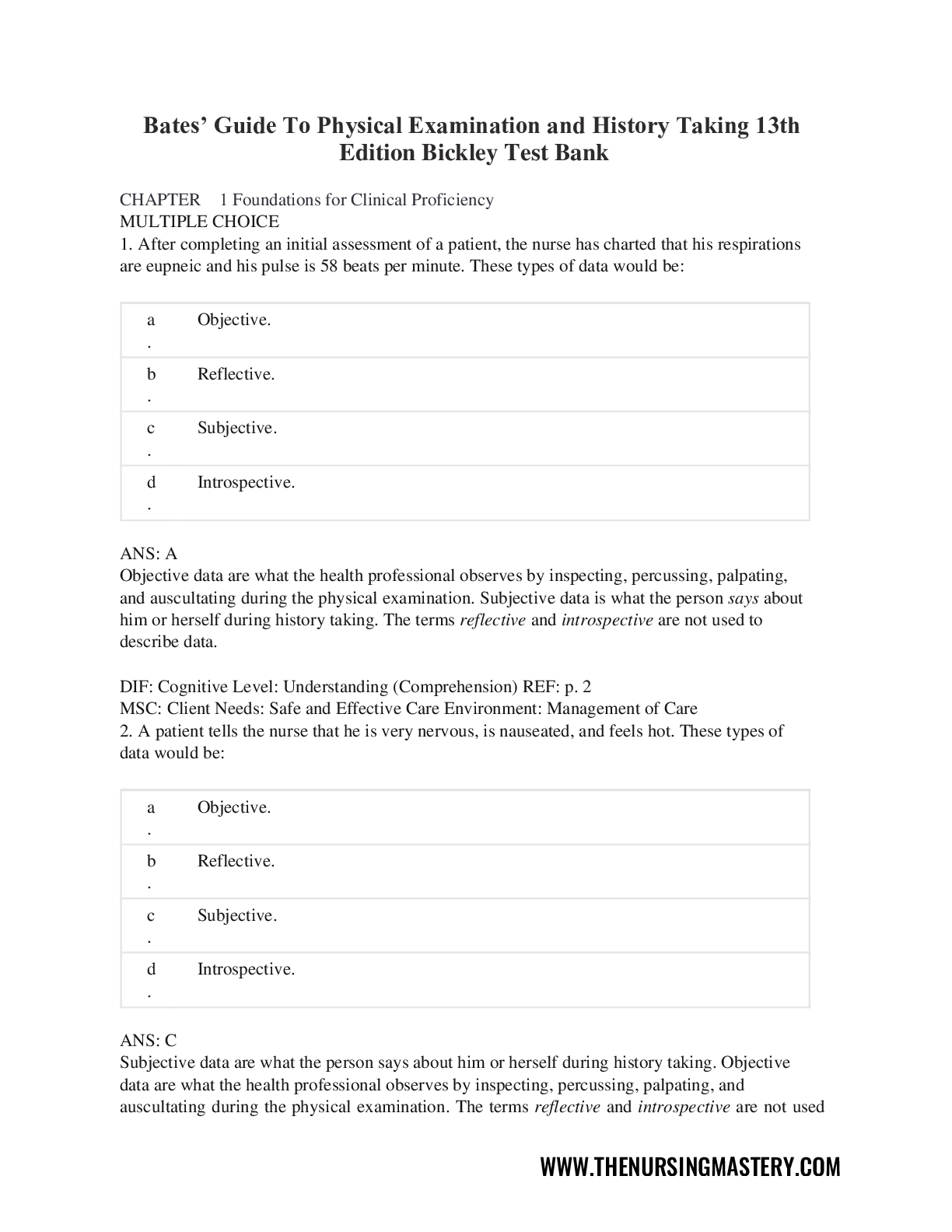
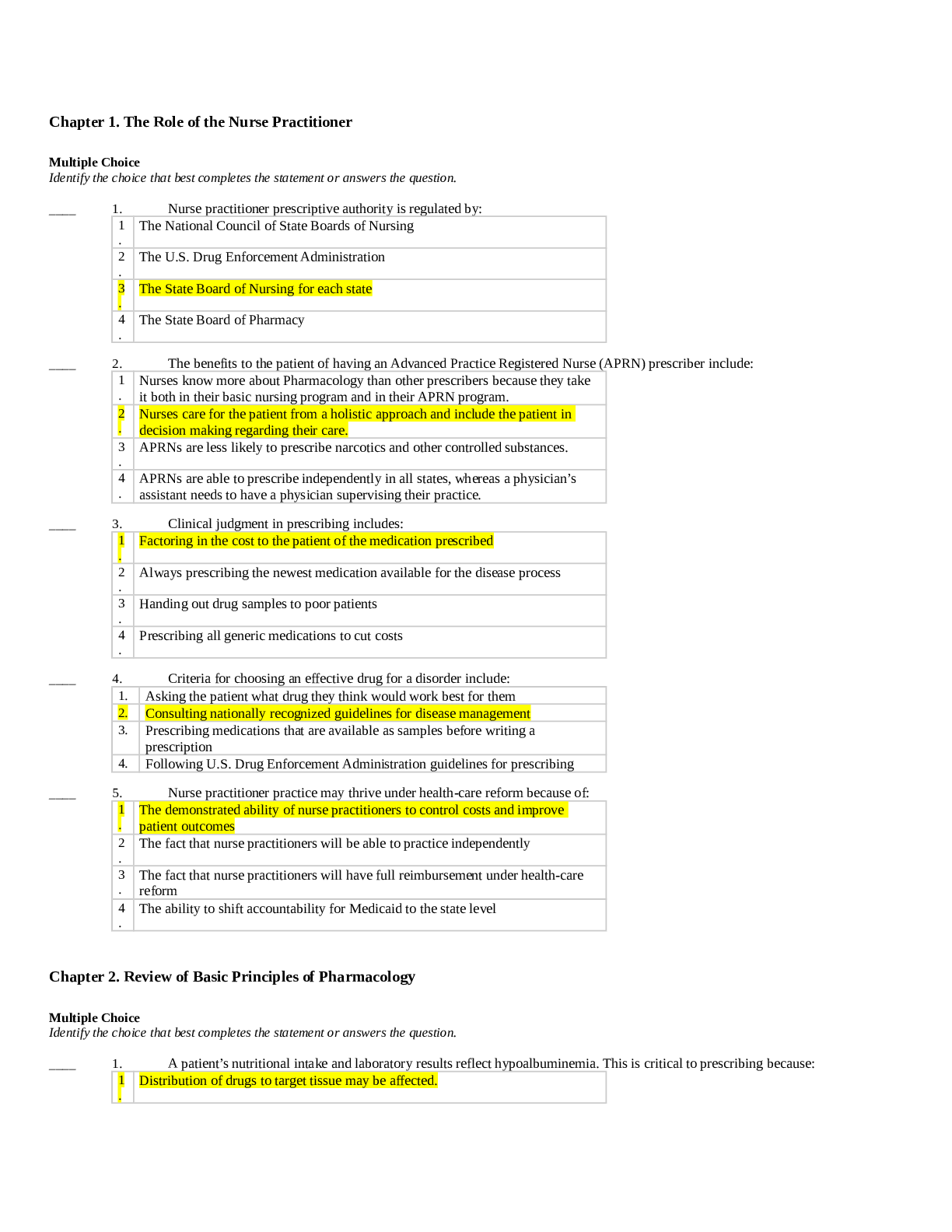
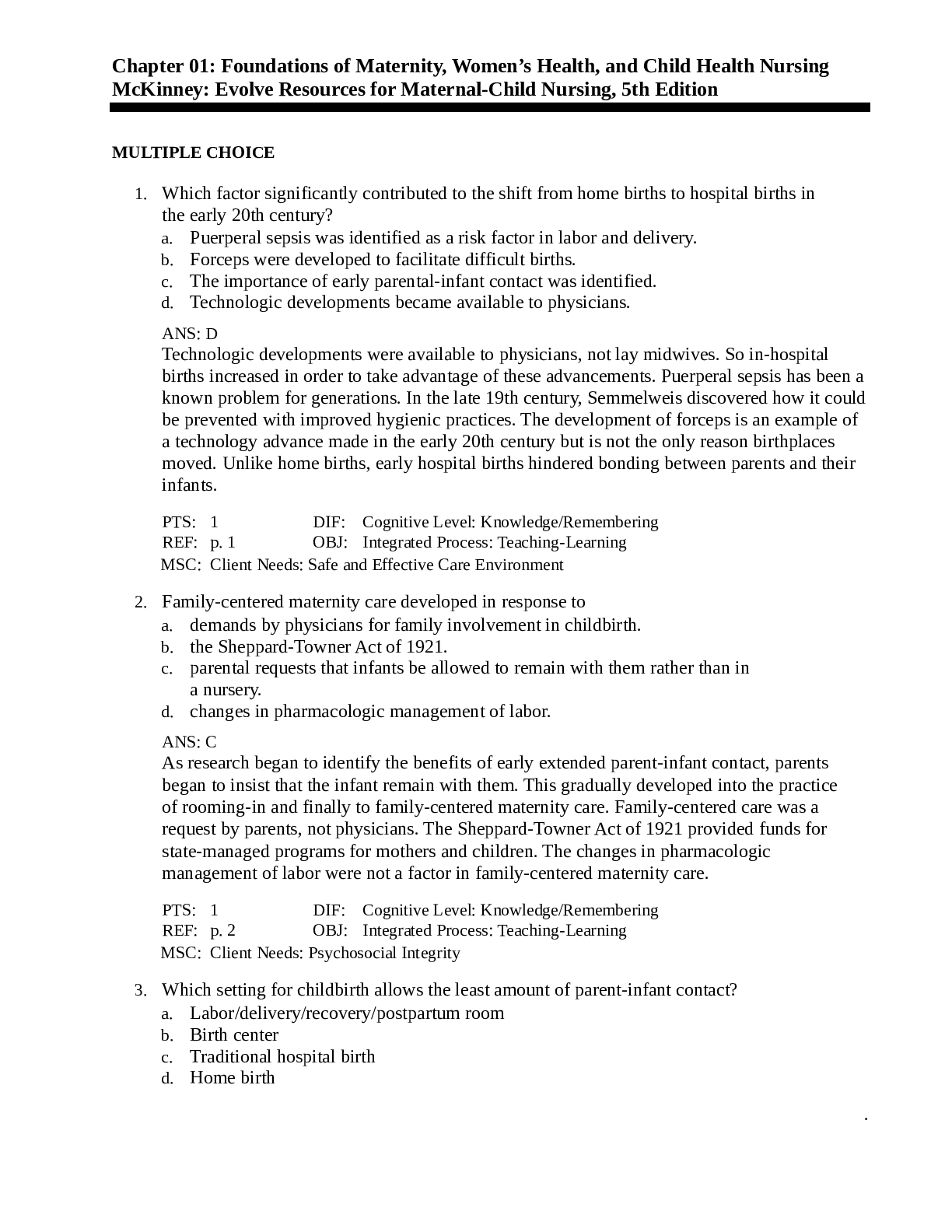
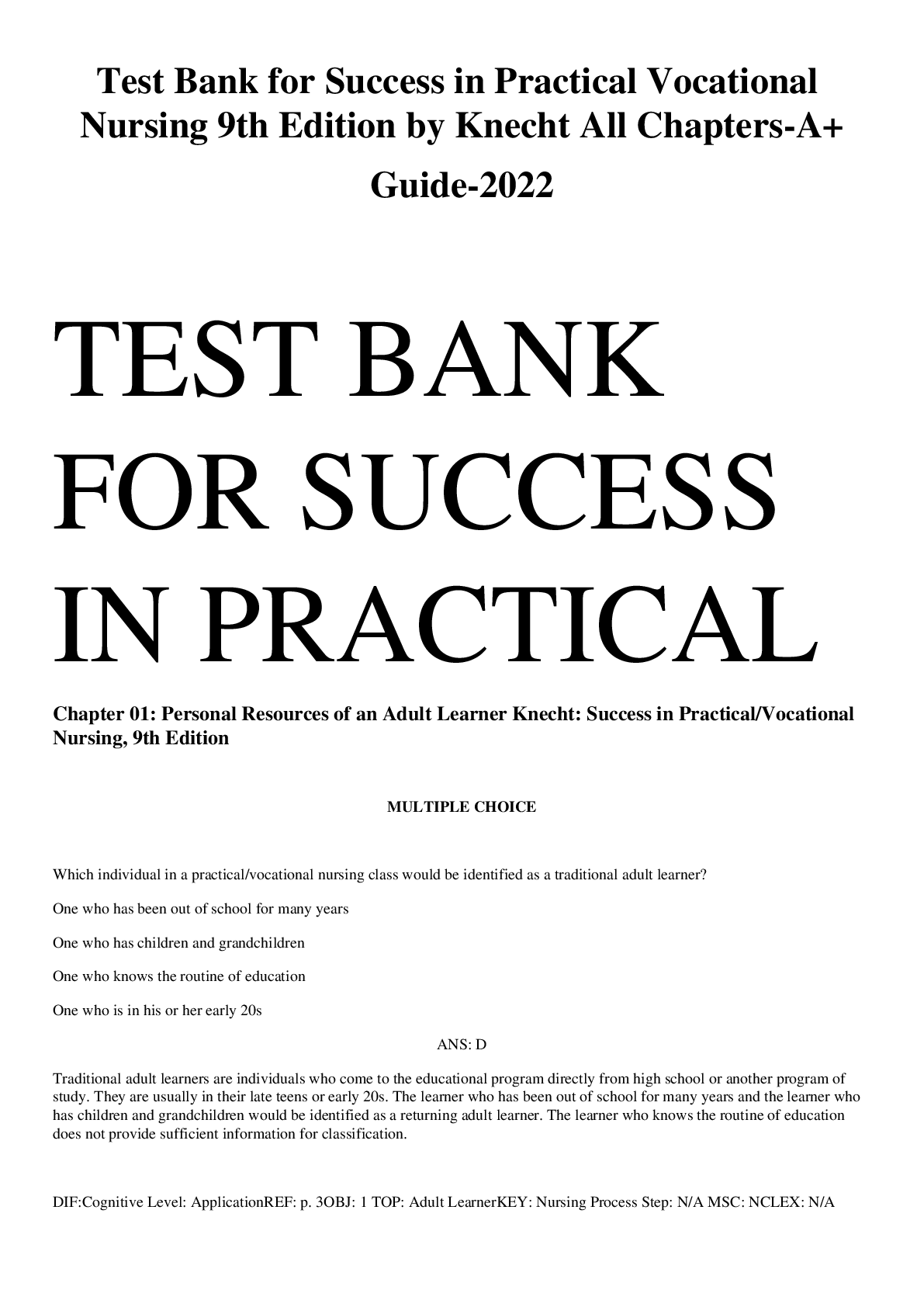


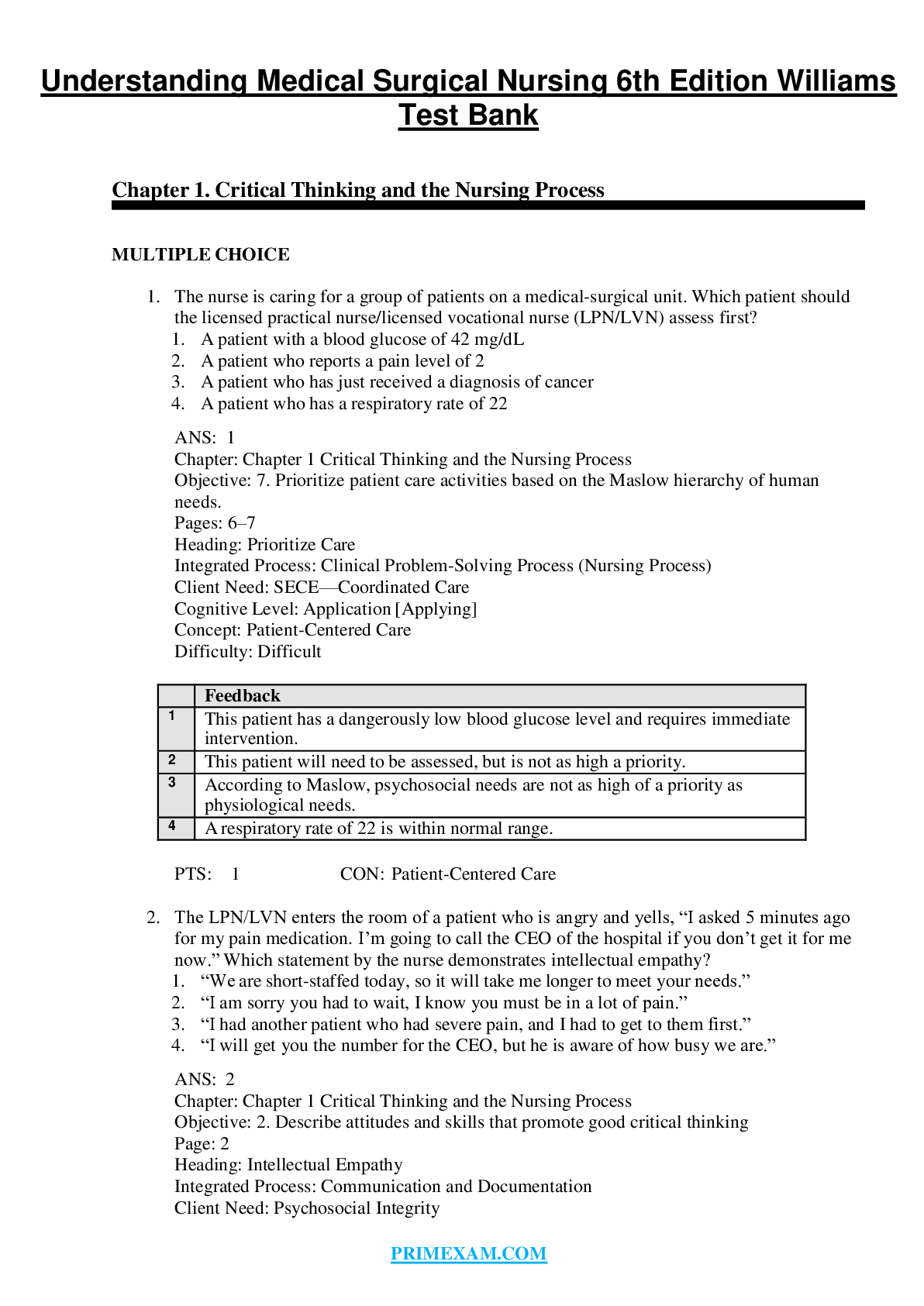
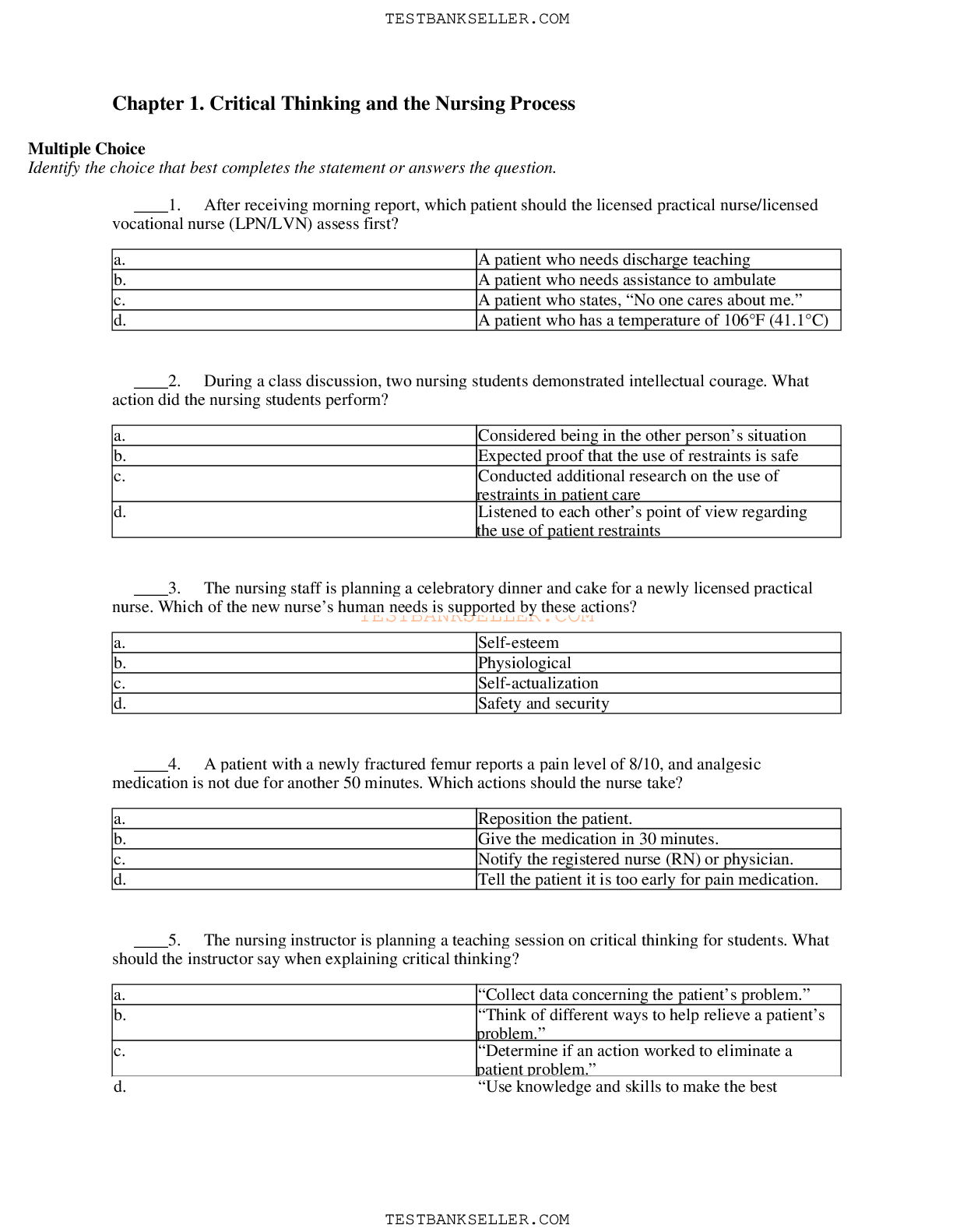
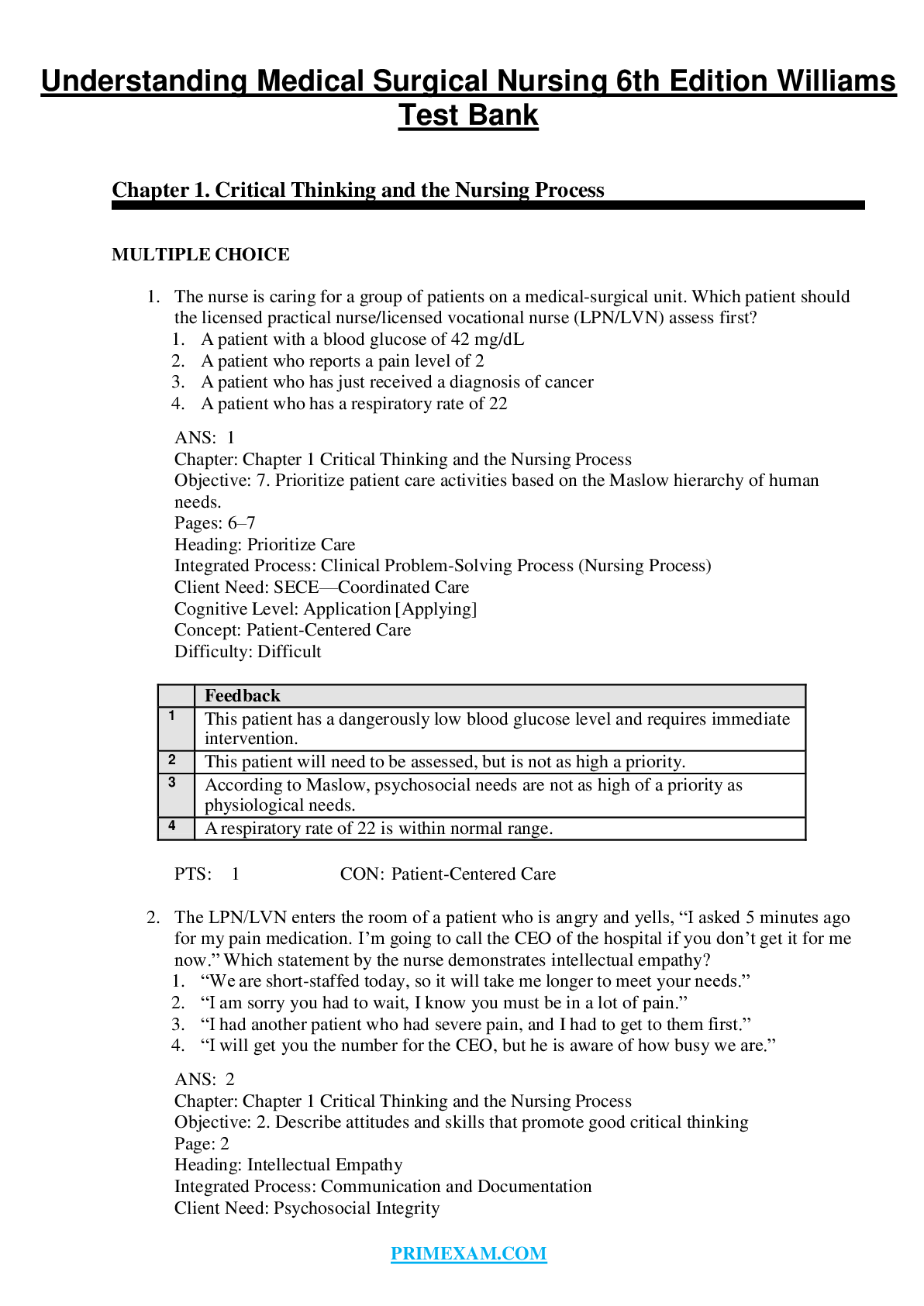
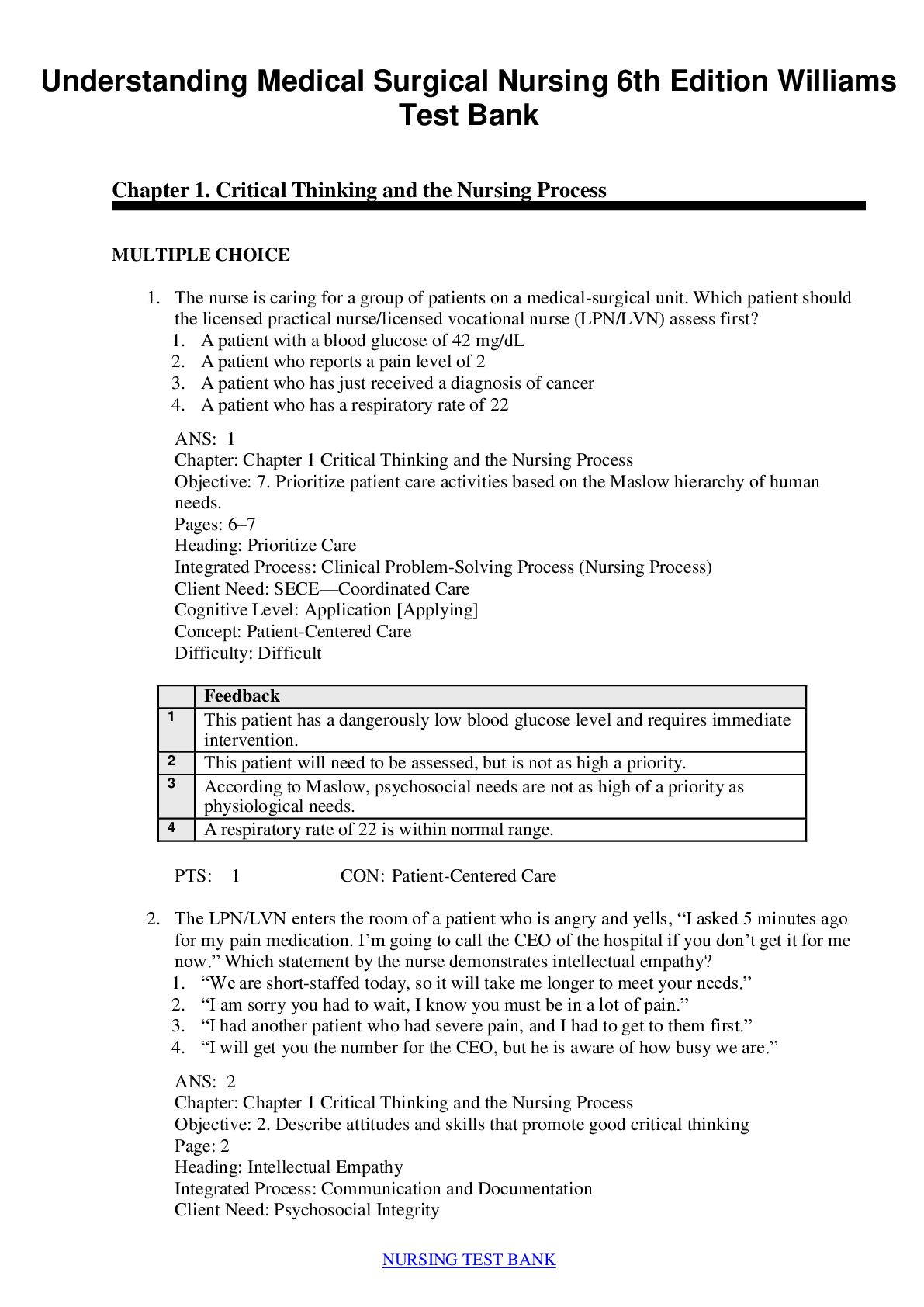
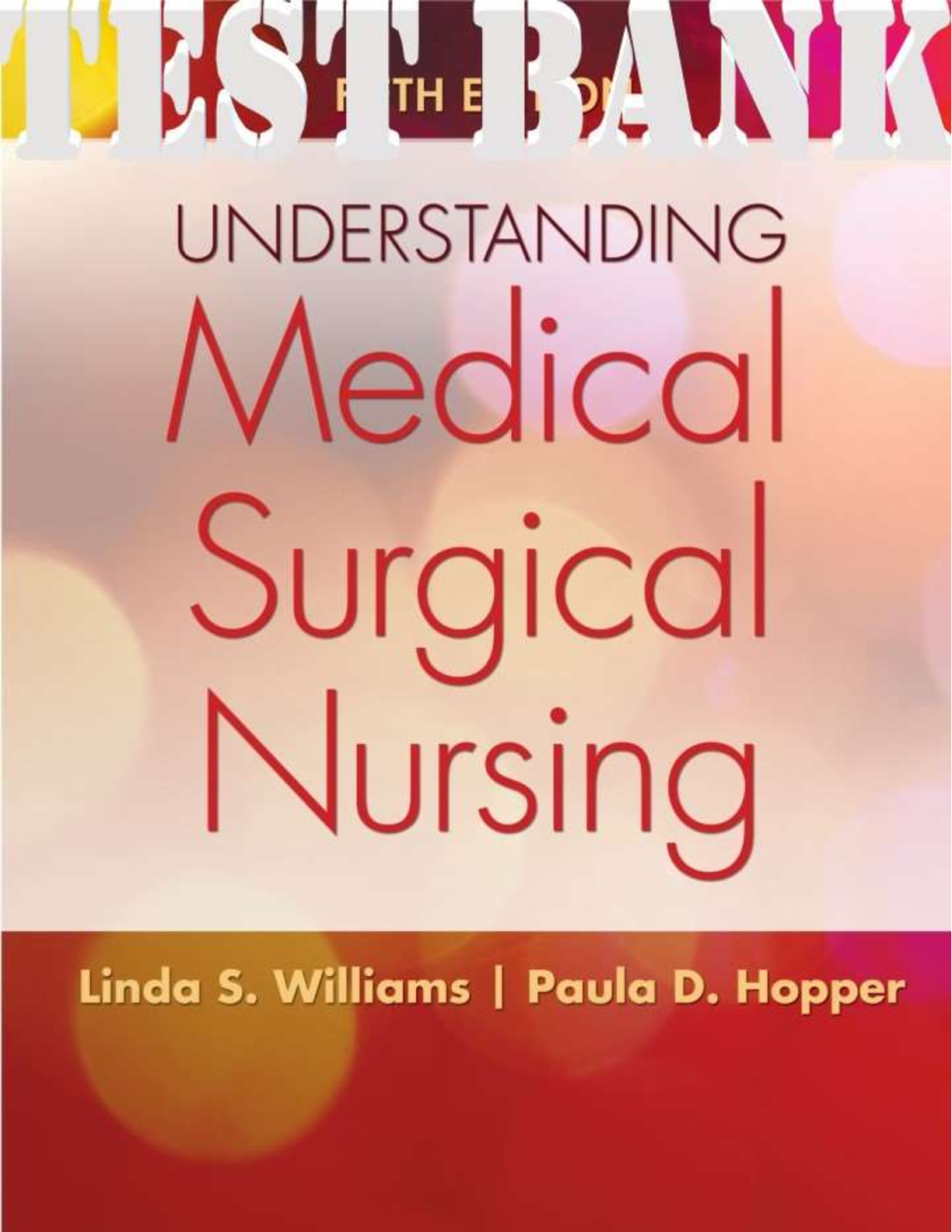
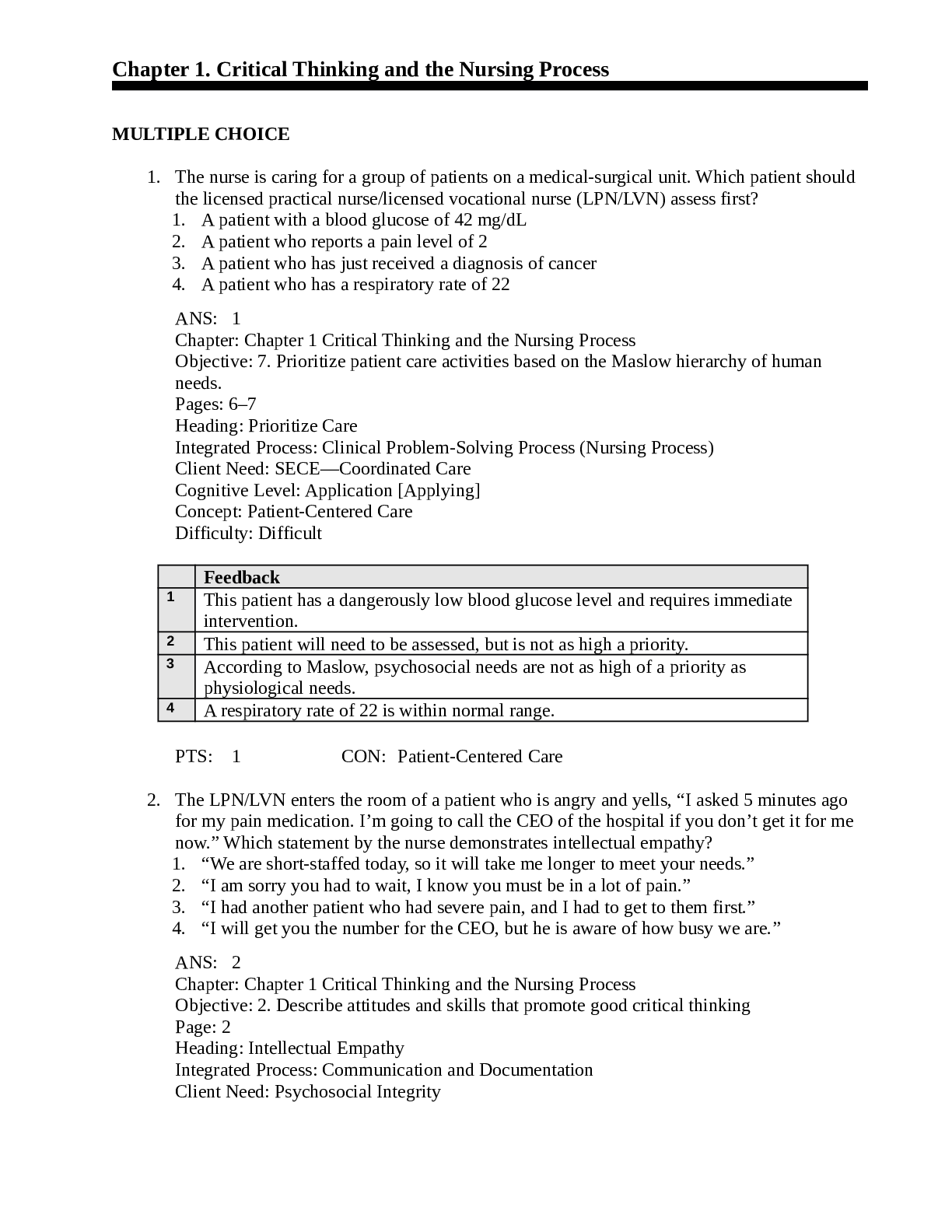
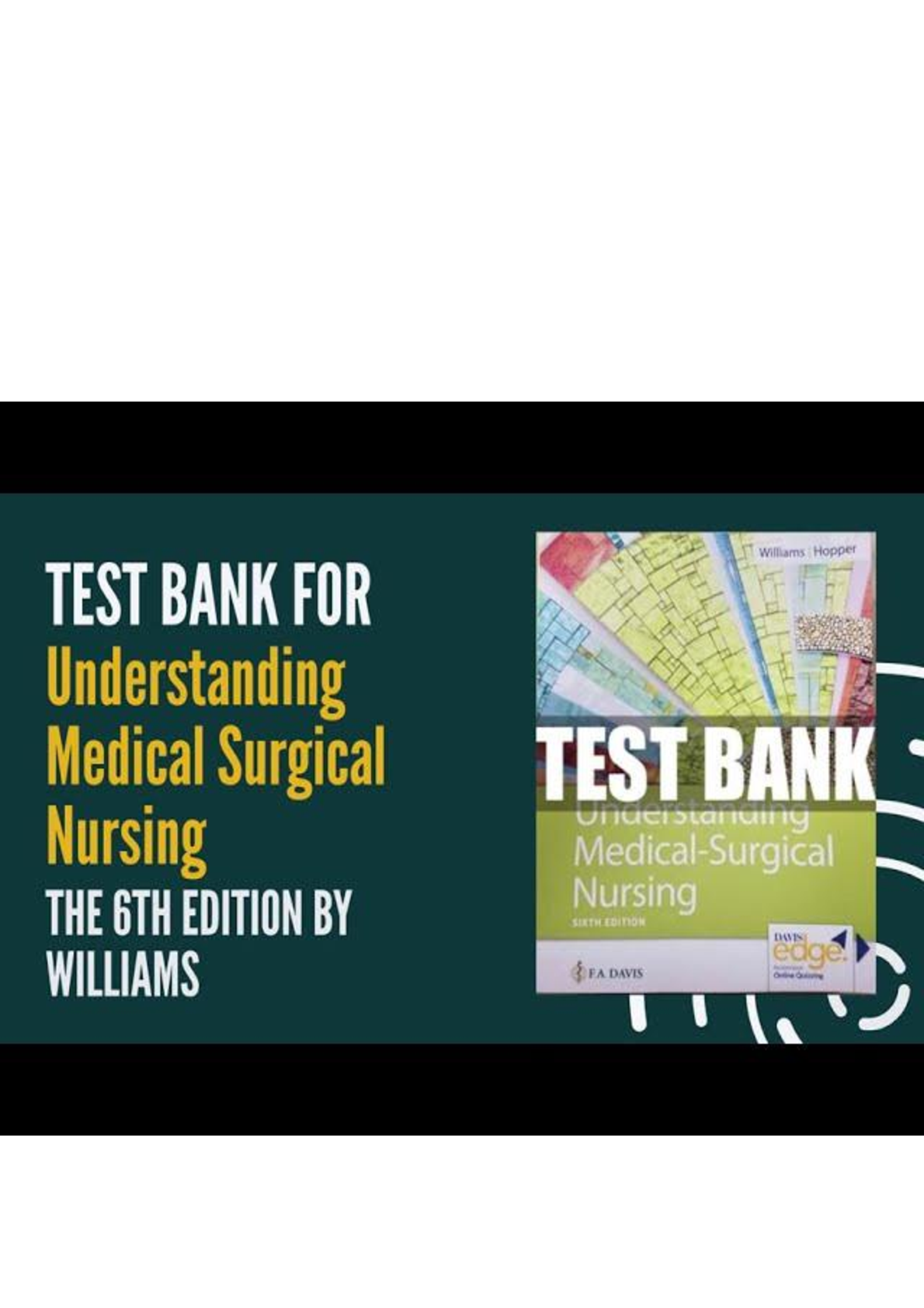

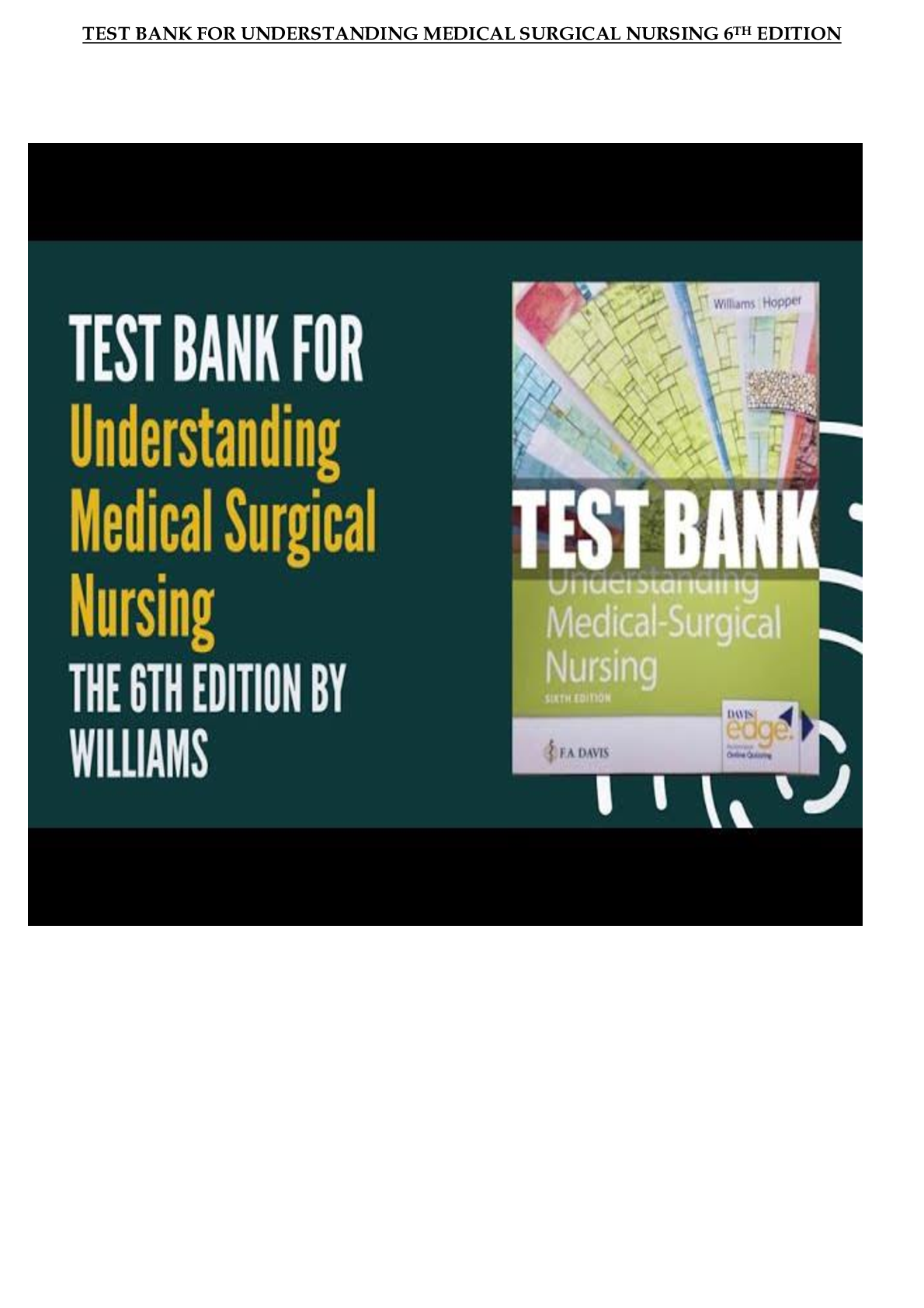

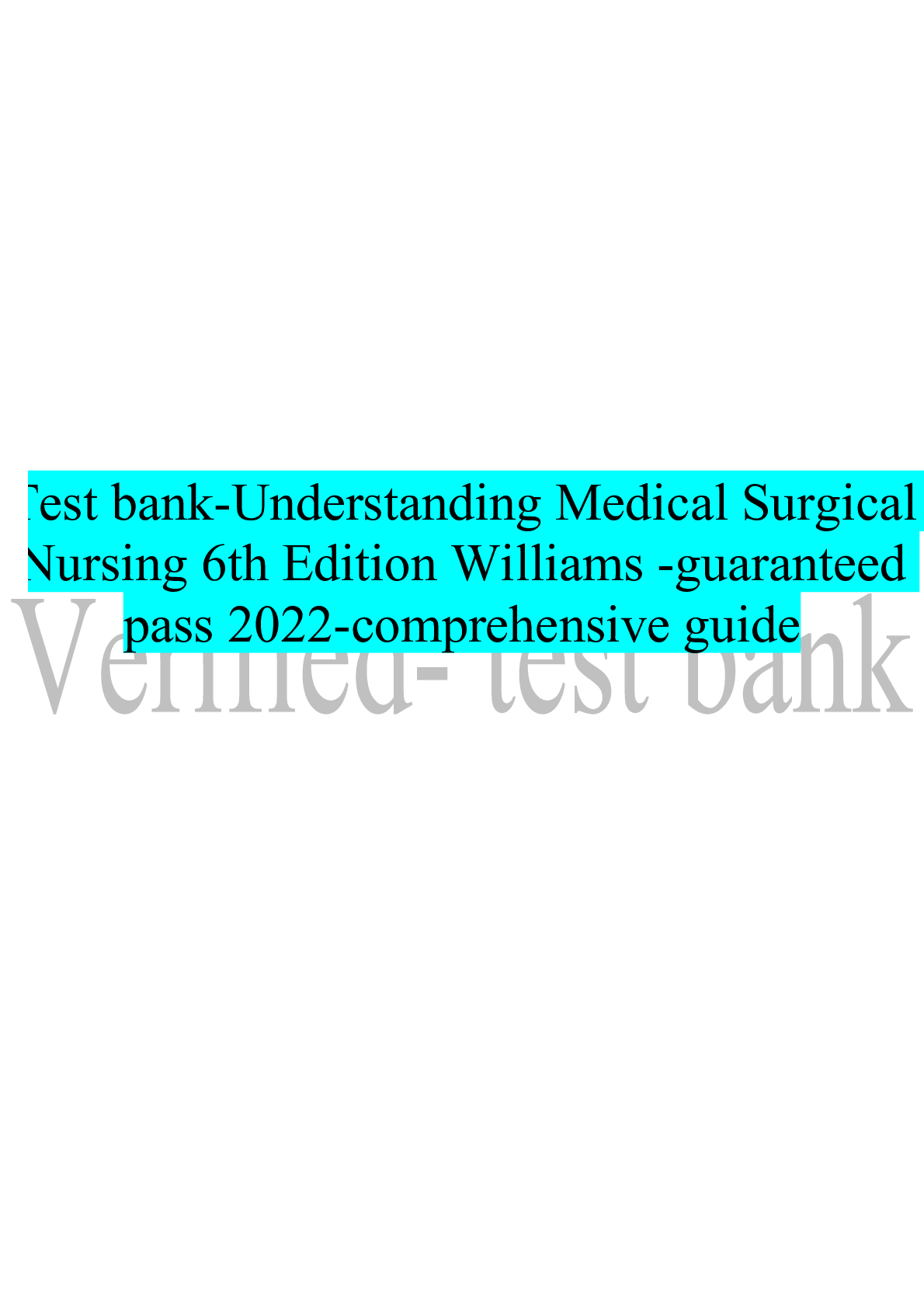
.png)
